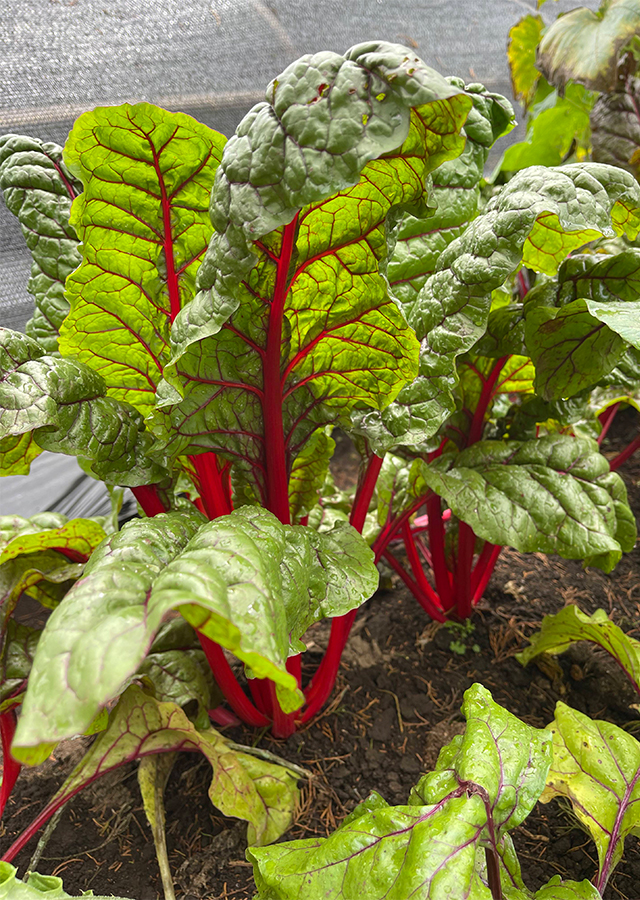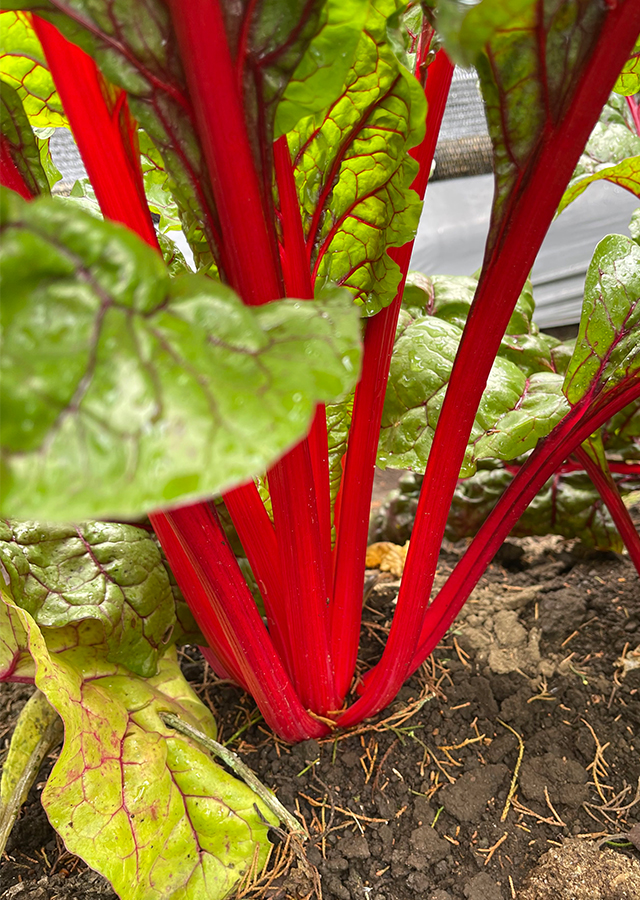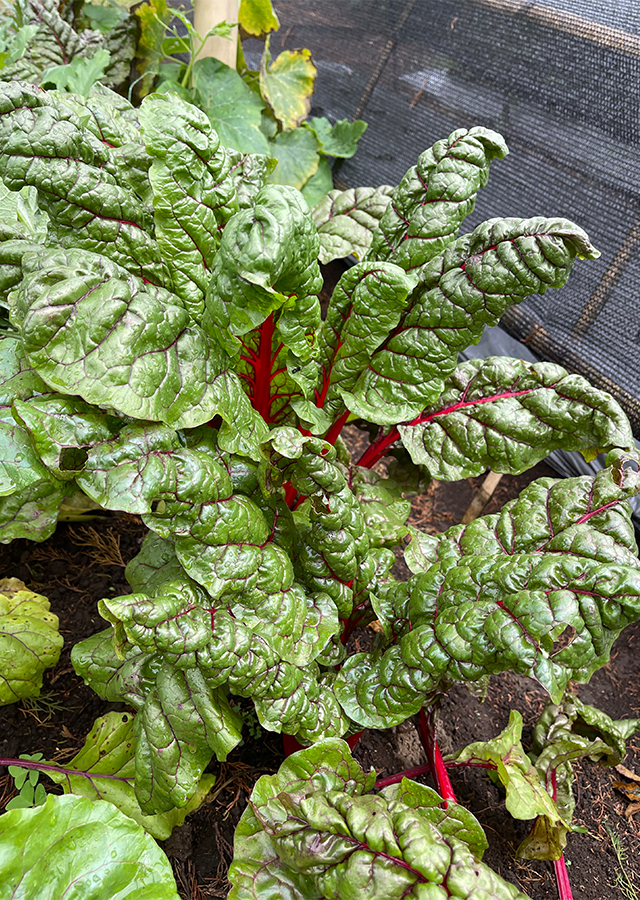Rhubarb
Beta vulgaris subsp. vulgaris L.
Amaranthaceae
Location in our garden
Vegetable



Synonym
Beta cicla (L.) L.
Beta cicla var. argentea Krassochkin & Burenin
Beta cicla var. viridis Krassochkin & Burenin
Habitus
Herbaceous. Biennial herbs, grows up to 50 cm high
Part Used
Leaves
Growing Requirements
Full Sunshine
Need Shade
Low Temperature
Habitat
Mountains
Terrestrial
Overview
Originated from the Mediterranean/European region, this plant can be consumed as a vegetable, where the young leaves are usually used as salads and the slightly older ones are cooked or sauteed. It can also be added to salads, pizza, pasta, gratins, bruschetta, and soups. The leaves and stems can be boiled, roasted or steamed. Besides being grown for consumption, B. vulgaris is also often cultivated as an ornamental plant. With its glossy leaves and colorful stems, this plant becomes an eye-catching focal point. This vegetable also contains a low number of calories which makes it a great diet food, as a good source of Vitamins K, C, A, potassium, magnesium, dietary fiber and iron.
Vernacular Names
No information found. Need further search.
Agroecology
B. vulgaris is a biennial plant that grows as an annual in all temperate zones. The plant is hardy to temperatures around -9 °C, but although it does best in cool temperatures, it can tolerate heat with adequate watering. Successful cultivation requires a location that gets full sun, but grows best if placed in a shady location, with soil that is rich in organic matter and has good drainage. The ideal pH range is between 6.0 and 8.0.
Morphology
- Roots - It has a deep, strong, woody root system.
- Stems - bright red color.
- Leaves - wide, wavy, wrinkled with a length of about 37 cm and a width of 25 cm. The dark green leaves are shiny and crunchy. Bright red stalks reach a height of 25-30 cm.
- Seeds - contains 2 to 8 fine seeds.
Cultivation
Propagated by seeds - before planting, seeds should be soaked for 15 minutes using warm water. This method is used to speed up the germination process. Then sow the seeds on the planting medium with a depth of 1.2 cm with a soil temperature of 10 °C. Transfer the seeds that have sprouted into the garden once they are 6-8 cm tall. It will also sprout again after the leaves are cut so it can be harvested several times a month.
Chemical Constituents
Good source of fiber, betalains, flavonoids, b-carotene, polyphenols.
Traditional Medicinal Uses
- Prevent diabetes and cancer.
- Maintain healthy bones and blood pressure.
- Increase brain intelligence.
- Improve blood circulation.
- Stop bleeding in wounds.
- Good for vision and hair health.
Part Used
Reference Sources
- Royal Botanic Gardens. Plants of the World Online: Beta vulgaris subsp. vulgaris. https://powo.science.kew.org/taxon/urn:lsid:ipni.org:names:165550-3. 26-06-22.
- Health Benefit Times. 2021. Swiss chard – Beta vulgaris subsp. vulagaris. https://www.healthbenefitstimes.com/swiss-chard/. 26-06-22.
- Nan Schiller. 2019. How to Plant and Grow Swiss Chard. https://gardenerspath.com/plants/vegetables/grow-swiss-chard/. 26-06-22.

